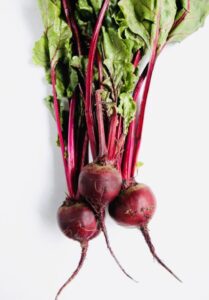So many people are quick to brush off a little pain in your legs. But that tendency is the reason so many people with peripheral artery disease (PAD) have delayed or missed diagnoses. You see, PAD is a condition that develops slowly and with few symptoms. Inside your body, your blood vessels are slowly narrowing due to atherosclerosis, a build-up of fatty deposits that keeps enough blood and oxygen from getting to your legs. And it’s that lack of oxygenated, nutrient-rich blood which can make your legs feel uncomfortable and crampy. Which in turn is why you should never ignore leg pain that appears for no apparent reason.
Now you know why ignoring leg pain can be so dangerous to your health. Next, let’s take a closer look at ways you can increase the flow of blood to your lower extremities.
If you want to avoid PAD, or reduce existing symptoms, your best bet is to keep your arteries and blood vessels clear of blockages. You also need to work on improving your blood circulation. 
The first step in this process? Get moving! Physical activity encourages blood flow. Plus, it helps you maintain a healthy weight, which can also help your body provide sufficient blood to your extremities.
Still, moving more isn’t enough. Diet is also a crucial part of preventing atherosclerosis, the “hardening of the arteries” that causes PAD. That’s because, through a healthy diet, many individuals may be able to lower their cholesterol levels. And high cholesterol is linked to the build-up of plaque in your arteries. (Keep in mind that some people may require medication to lower cholesterol levels. Discuss all changes to your diet with your healthcare provider.)
How important is your diet to your PAD risk? Well, according to recent research, eating legumes, dietary fiber, and vegetable protein significantly lowers your PAD risk. At the same time, eating all kinds of red meats, processed meats, and/or sugary soft drinks upped your risk by a lot.
So, what does that mean for you? Regardless of whether or not you also need medication, people with PAD should focus on proper nutrition. As it turns out, many of the foods you eat can actually help improve your blood flow and boost the health of your veins and arteries.
If you're worried about blood flow, take a peek at your diet. Try adding beets and beetroot juice--their nitrate content converts into nitric oxide, which improves blood pressure and blood flow. Onions and garlic are also great choices because they help relax your blood vessels. Want a protein option? Fatty fish, rich in omega-3s, boosts blood flow by preventing blockages.
Spices are another easy way to improve your flow: both turmeric and cayenne are helpful. Rounding out the diet powerhouse? Include pomegranate, oats, beans, and wholegrains. Add nuts, eggplants, apples, berries and citrus fruit, too. Before you know it, that blood will be flowing in tip-top shape!
Even if you don’t have PAD symptoms, adding these foods to your diet and increasing your weekly movement can help prevent problems. But, if your legs hurt; or if you notice changes like discolored legs or loss of hair on your legs, you may already have PAD. If that’s the case, don’t delay: make an appointment to see our Houston and Dallas area PAD specialists right away. Early intervention can prevent further complications, including heart attacks and strokes! Contact us today to learn more about PAD treatment options.

Scheduling
Please contact our dedicated specialists to schedule a consultation today.
2025 Texas Endovascular. All rights reserved. Website Design by Healthcare Success